#museu d'història de Barcelona
Explore tagged Tumblr posts
Text

18th-century painted tile of a woman and her cat keeping warm.
This style of tiles is called "job tiles" and is one of the most characteristic forms of Catalan folk art. They were very common between the 17th and the early 20th centuries and represent people doing everyday activities such as jobs, hobbies, holidays, playing musical instruments, etc as well as representing animals, ships, and more.
Source: Museu d'Història de Barcelona.
#rajoles d'ofici#arts#arqueologia#catalunya#winter#18th century#1700s#18th century art#1700s art#folk art#art#painting#pintura#european art#winter aesthetic#historical#archaeology#cat#cat art
209 notes
·
View notes
Text

A marble plaque in the Museu d'Història de la Ciutat de Barcelona, dated from around 110–130 AD and dedicated to the Roman colony of Barcino
https://www
8 notes
·
View notes
Photo



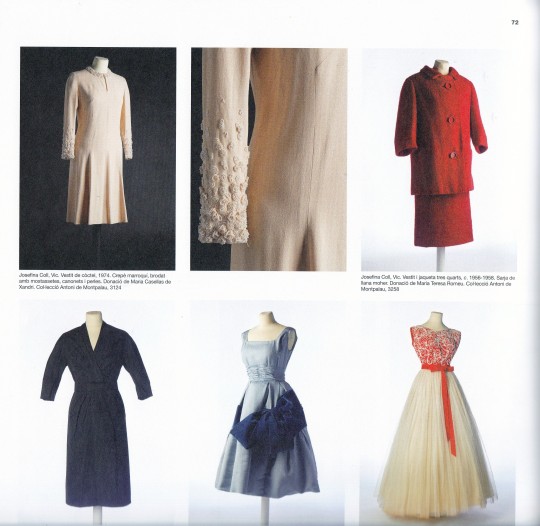

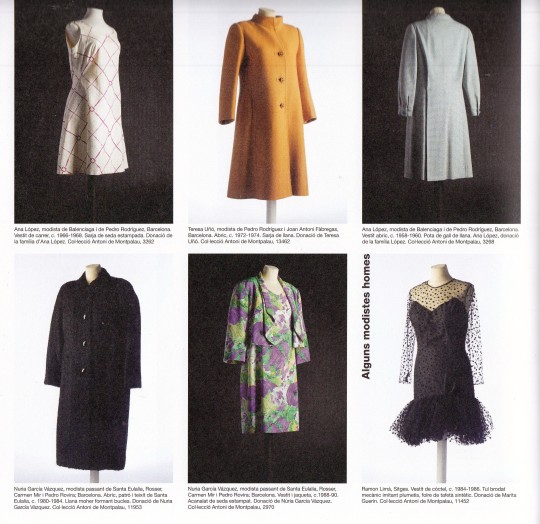

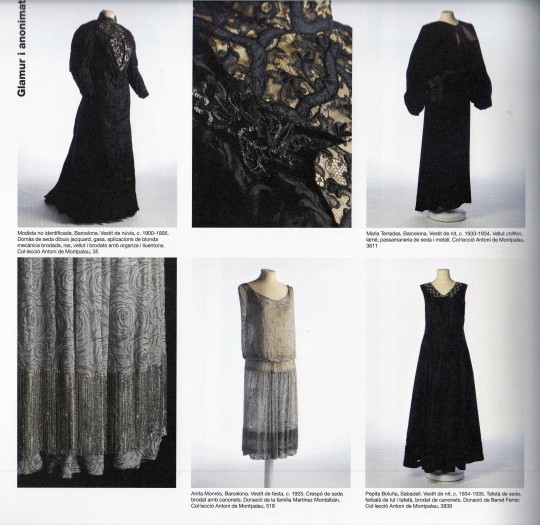
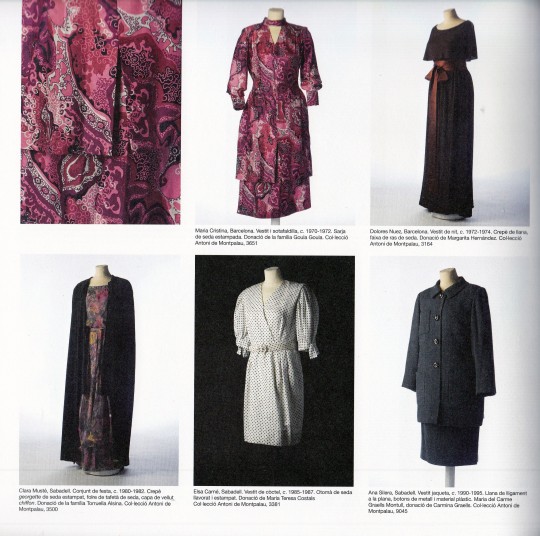
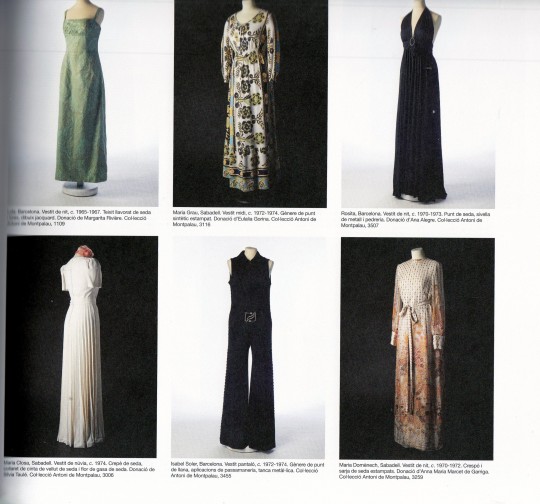
Moda i Modistes
Col-lecciò Antoni de Montpalau
Museu d’Història de Catalunya, Barcelona 2019, Pàgines 140, 24x24 cm, Català, ISBN 978-84-393-9889-9
euro 46,00
email if you want to buy [email protected]
De 3 de maig al 13 d’octobre de 2019
Catàleg de l'exposició Moda i Modistes que va tenir lloc al Museu d'Història de Catalunya del 3 maig al 13 d'octubre de 2019. L'exposició, fruit de la col·laboració entre el Museu d'Història de Catalunya i la Fundació Antoni de Montpalau, posa en valor el treball de les modistes al llarg del segle XX; presenta una mirada àmplia a l'obra i la trajectòria de tantes dones que, sovint, han restat en l'anonimat més enllà de la memòria oral familiar respectiva o del record, cada vegada més apagat, de la seva antiga clientela.
02/03/23
orders to: [email protected]
ordini a: [email protected]
twitter: @fashionbooksmi
instagram: fashionbooksmilano, designbooksmilano tumblr: fashionbooksmilano, designbooksmilano
#Moda i Modistes#fashion exhibition catalogue#Museu Història Catalunya Barcelona 2019#Fundaciò Antoni Montpalau#catalan fashion#XX Century Fashion#fashion books#fashionbooksmilano
7 notes
·
View notes
Text
Where the Counts were also Kings

The history of the Palau Major of the Counts of Barcelona, later Kings of Aragon, began in 1116, when it was first mentioned to distinguish it from the Palau Menor, which no longer exists.
The palace stretched from what was then the Romanesque cathedral, located at one end of the present-day cathedral complex, to a small square, Sant Iu square, which is located at one of the side exits of the cathedral, at the other end of the religious building.
The complex contains different buildings, such as the Saló del Tinell, ordered to be built by King Pere el Cerimoniós (Peter III of Aragon) in the 14th century; the palatine chapel of Santa Àgata, dating from the beginning of the same century, under the reign of Jaume II; and el Verger, a porch garden surrounded by several rooms that communicated with el Tinell and is now part of the Museum Frederic Marés.
Also part of the complex are the stairs leading to the palace, the meeting place of the Consell de Cent, which governed the city for as long as this institution did not have its own headquarters. It is one of the most characteristic places in the Gothic complex, located in a corner of the Plaça del Rei.
Later, in the 16th century, the Mirador del Rei Martí was added, although this monarch reigned at the beginning of the 15th century as the last king of the Catalan dinasty Casal de Barcelona. This building is characterised by its height and galleries with semicircular arches.
Another building that was added to the complex during the 16th century was the Palau del Lloctinent, built at the behest of the Generalitat de Catalunya and which is now the headquarters of the Arxiu de la Corona d’Aragó.
The rooms of the Palau Reial Major de Barcelona are now part of the Museu d'Història de la ciutat, which offers a tour of the subsoil of Barcelona, where archaeological remains from Roman times can be found.
1 note
·
View note
Text


Barcelona - 11 de Setembro de Ano 2 - Sábado - Crítica - 26 anos
07:00 - Acordo, tomo banho e me arrumo.

07:50 - Tomo café;



08:20 - Saio. 08:30 - Faço umas comprinhas: Litvin Diamonds

08:50 - Outra: NOTENOM

09:10 - Outra: Ralph Lauren Barcelona


09:30 - Pego o metrô para ir a praia, passear. 09:50 - Chego: Praia de La Barceloneta

10:30 - Vou ao museu: Museu d'Història de Catalunya



12:00 - Almoço: MOLO 39 Palau De Mar





13:40 - Volto ao hotel e tomo um drink no terraço.

14:30 - Fico trabalhando.


17:00 - Tiro uma soneca. 18:30 - Tomo banho e me arrumo para sair. 19:40 - Encontro Jord e amigos: Batea





23:00 - Curtimos a night: Pacha Barcelona


0 notes
Text

MUHBA
-XabierAM 2018
#original photographers#muhba#museu d'història de Barcelona#gòtic#gótico#gothic#architecture#arquitectura#barcelona#catalunya
8 notes
·
View notes
Photo

Plaça de Sant Jaume on Flickr.
Plaça de Sant Jaume
3 notes
·
View notes
Text
Grifa i khachapuri
4 de gener del 2023
La grifa és com es coneixia l'haixix a mitjans del segle passat. Ho sabíeu? Jo no en tenia ni idea. De fet, avui dia ja tinc prou problemes per saber distingir la droga en si, no sé què és el cristal, en quin estat es pren la ketamina, si el popper es pot consumir també en format pastilla, si la cocaïna deixa taca si et cau al jersei... Tantes preguntes sense resposta, però me la suda, puc viure sense saber-ho. Parlo de la grifa perquè avui he anat a gravar un reportatge pel 'Tot és comèdia' al Museu d'Història de Catalunya. No sé quants anys feia que no tornava a trepitjar aquest museu. Hi ha una exposició fins el 26 de febrer que es diu 'Crim i delicte' (anava a escriure 'crim i càstig' xd) i que ha comissiariat l'escriptor Andreu Martín, amb qui de fet m'he citat perquè m'acompanyés a fer l'exposició. Me l'anava explicant mentre jo gravava i li feia preguntes, una d'elles, "què és la grifa?" i m'ho ha explicat molt amablement. És un home molt simpàtic i que es fa entendre molt bé, m'ha caigut genial, i ha compartit amb mi una reflexió que desconeixia, com la grifa: creu que encara hi ha cert estigma cap a la literatura policíaca. Ell és especialista en aquest camp, i creu que malgrat el CSI, 'Rex, el perro policía', el 'Crims' del Carles Porta i tooootes les pel·lícules d'aquest estil que sembla que han posat tan de moda el gènere, encara hi ha certs sectors dins de la intel·lectualitat que el rebutgen. Diu que l'exemple més clar és quan veu qui ve a les presentacions dels seus llibres, o quin ressò tenen tots els llibres que es publiquen d'aquest estil als mitjans.
També m'ha dit una frase que m'ha encantat, perquè algun cop també l'havia pensat. Diu "quan estàs a un restaurant, no pots saber si potser els de la taula del costat estan planejant un assassinat o un robatori. Ara, mentre parlem, segur que hi ha algú a Barcelona que està planejant un assassinat o un delicte". Efectivament! Jo tinc una altra teoria a més, i que no té absolutament res a veure amb el que diu l'Andreu, però me la suda, això és el meu diari i la poso: sempre hi ha algú que t'està veient. Que per molt que et pensis que no et veu ningú o que estàs en un lloc aparentment "protegit", sempre hi ha algú en algun racó que et pot estar veient. M'encanten aquesta mena de paranoies, perquè és tipo "vale, si això m'inquieta més del que hauria, se'm farà insuportable l'existència". Com si del teu pensament depengués el grau de bogeria que estàs disposada a assumir.
Avui la meva feina ha estat gravar la conversa amb l'Andreu i després muntar el reportatge. M'agrada muntar reportatges i coses per la ràdio. He posat una cançó de sortida del reportatge de la sèrie Utopia, que és del Cristobal Tapia De Veer i que va i més tard he descobert que és el mateix paio que ha posat música a la sèrie 'The White Lotus'! Maravilla. Buscant músiques per posar al reportatge he escoltat una cançó que no recordo però que m'ha recordat a un tros de la cançó Baby Can I Hold You de la Tracy Chapman, i ja no me l'he pogut treure del cap en tot el sant dia.
Per sopar hem anat a un georgià. Ja fa temps vam veure un dia un anunci a instagram o algo així d'un plat georgià que es diu khachapuri adjaruli (ho he hagut de buscar perquè no me'l sé de memòria). Ve a ser una mena de base de pizza en forma de kayak gordo i dins hi ha molt de formatge i un ou cru. BUENO. MARE. DE. DÉU. SENYOR. La bomba que és això no val la pena que s'expliqui fins que no es tasta. La cambrera, en veure'ns la cara de gilipolles que tenim, es va oferir "Sabeu com es menja?", i nosaltres "no", i ella "us ho barrejo, si voleu". Sort que ho va fer ella, amb molta traça va barrejar el kg de formatge i l'ou sense vessar el kayak i vinga. El resultat és el de la foto:
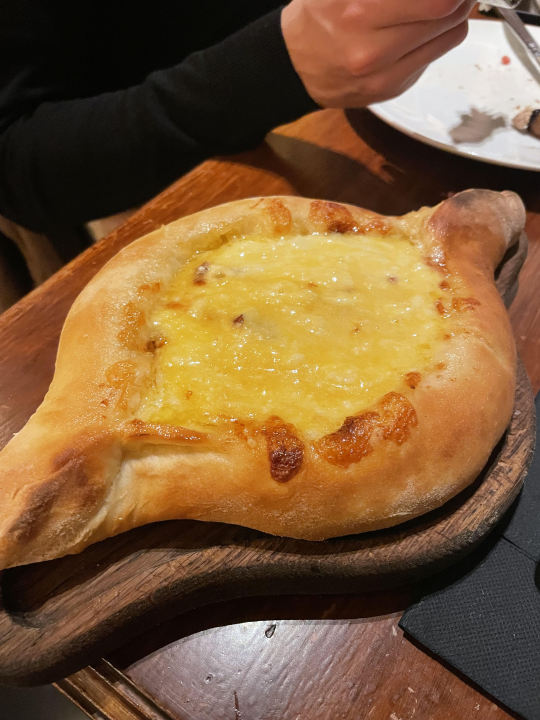
Érem cinc i no teníem tanta gana com per menjar-nos un vaixell d'aquests sencer per persona, però clar ens feia il·lusió tastar-ho perquè després de tants anys amb aquesta idea fixada al cap, doncs s'havia de provar. I sense saber com eren les racions, vam demanar abans de la khachapuri una mena de croquetes de formatge (és que joder, ho explico i penso "com se'ns va acudir?") "per picar". Per picar?? Ja amb les croquetes ens haguéssim quedat plens. Vam intentar anul·lar la comanda amb la cambrera, però ens va dir que no, que ja s'estava cuinant tot. Ens vam emportar les sobres, naturalment, perquè estem al segle XXI.
1 note
·
View note
Photo
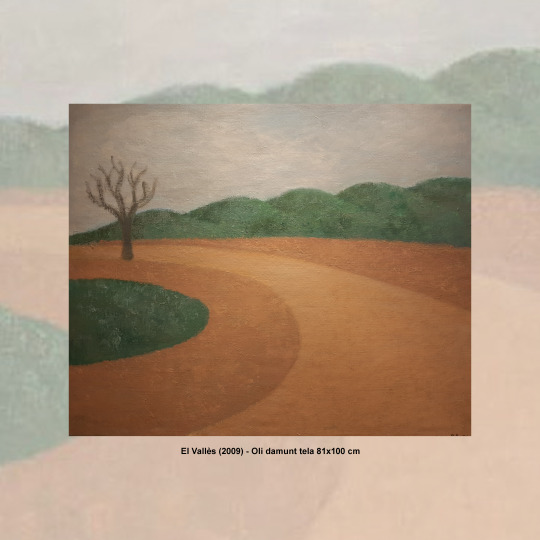
Després de diverses estades a diverses ciutats d'Itàlia, Madrid i París, el 1960 va exposar individualment a la sala Jaimes de Barcelona,[1] i amb posterioritat a la sala Abril de Madrid, i ens anys successius a diverses galeries de Girona, Figueres i Cadaqués, Lleida, Tarragona, Sitges, Sant Cugat, Barcelona, Palma de Mallorca, Sant Sebastià, Madrid, Milà (Itàlia), Viena (Àustria), Brussel·les (Bèlgica), L'Havana i Holguín (Cuba) i Nova York (Estats Units d'Amèrica)..... La seva obra es troba a diversos museus, entre els quals el MACBA, el Museu de l'Hospitalet, el VINSEUM, la Biblioteca Museu Víctor Balaguer i el Museu d'Història de Girona.
1 note
·
View note
Text





17th- and 18th-century tiles decorated with representations of disabled people. From Barcelona, Catalonia. Museu d'Història de Barcelona: 1, 2, 3, 4, 5.
This tiles are "rajoles d'ofici" (meaning "job tiles" in Catalan language), a typical kind of decorated tiles that were very common in Catalonia between the 16th and 19th centuries, and which have become one of the most iconic examples of Catalan folk art. "Job tiles" are called this way because very often they represented people working, but they also represent people taking part in festivities, hobbies, or many other activities from daily life, as well as animals and workplaces. Thousands of these tiles have been preserved, and thanks to them we can see snippets of life a few centuries ago. (You can find more information and examples of these tiles in this previous post.)
#disability pride month#arts#catalunya#1700s#disabled#disability#18th century#art#tiles#crutches#catalonia#archaeology#història#arqueologia#european art#folk art#disabled representation#art history#rajoles d'ofici#barcelona
352 notes
·
View notes
Text
INTRODUCTION TO BARCLEONA

The Casa de les Punxes or Casa Terradas, designed by Josep Puig i Cadafalch.

Casa Batlló - in the center of Barcelona. Designed by Antoni Gaudí. It is considered one of his masterpieces. A remodel of a previously built house, it was redesigned in 1904 by Gaudí and has been refurbished several times after that. The local name for the building is Casa dels ossos (House of Bones), as it has a visceral, skeletal organic quality.

Plaça Catalunya - The plaza occupies an area of about 50,000 square metres. It is especially known for its fountains and statues, its proximity to some of Barcelona's most popular attractions, and the flocks of pigeons that gather in the centre.

La Rambla - is a street in central Barcelona. A tree-lined pedestrian street, it stretches for 1.2 kilometres connecting Plaça de Catalunya in the centre with the Christopher Columbus Monument at Port Vell.
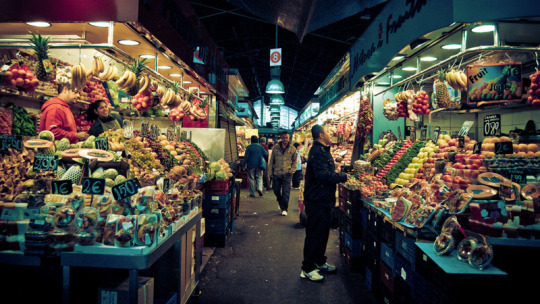
La Boqueria food market - is a large public market in the Ciudad Vieja district of Barcelona, Catalonia, Spain, and one of the city's foremost tourist landmarks, with an entrance from La Rambla, not far from the Liceo, Barcelona's opera house.

Gothic Quarter - The charming Gothic Quarter, or Barri Gòtic, has narrow medieval streets filled with trendy bars, clubs and Catalan restaurants. The Museu d'Història de Barcelona shows remains of the Roman city. Artisans sell leather and jewellery near the Cathedral of Barcelona, while flower stalls and street-food vendors line busy avenue La Rambla. The Plaça del Pi, named after the adjacent Gothic church, hosts a weekend art market.
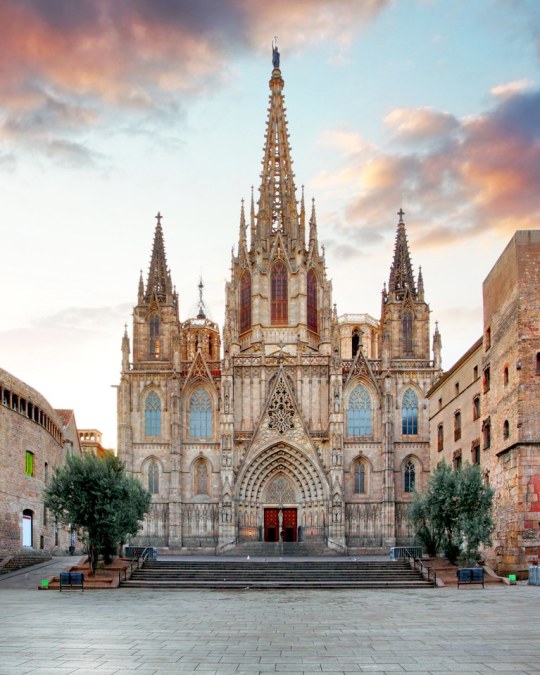
Barcelona Cathedral - The Cathedral of the Holy Cross and Saint Eulalia, also known as Barcelona Cathedral, is the Gothic cathedral and seat of the Archbishop of Barcelona, Catalonia, Spain. The cathedral was constructed from the thirteenth to fifteenth centuries, with the principal work done in the fourteenth century.

Basilica of Santa Maria del Mar - is a church in the Ribera district of Barcelona, Spain, built between 1329 and 1383 at the height of Principality of Catalonia's maritime and mercantile preeminence. It is an outstanding example of Catalan Gothic, with a purity and unity of style that is very unusual in large medieval buildings.
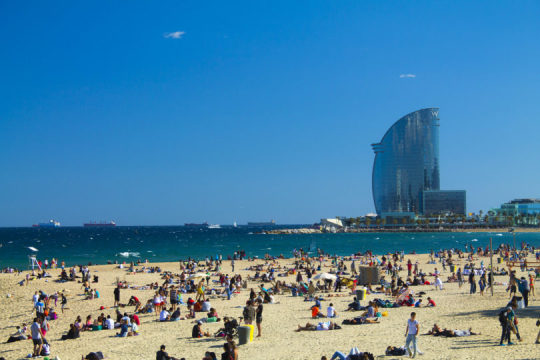
Beach

Park Güell - is a public park system composed of gardens and architectonic elements located on Carmel Hill, in Barcelona, Catalonia, Spain. Park Güell is the reflection of Gaudí's artistic plenitude, which belongs to his naturalist phase. During this period, the architect perfected his personal style through inspiration from organic shapes.
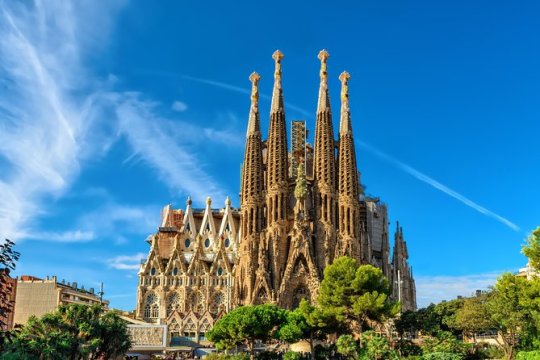


La Sagrada Familia - is a large unfinished Roman Catholic minor basilica in Barcelona, Catalonia, Spain. Designed by Catalan architect Antoni Gaudí. On 19 March 1882, construction of the Sagrada Família began under architect Francisco de Paula del Villar. In 1883, when Villar resigned, Gaudí took over as chief architect, transforming the project with his architectural and engineering style, combining Gothic and curvilinear Art Nouveau forms.
Gaudí devoted the remainder of his life to the project, and he is buried in the crypt. At the time of his death in 1926, less than a quarter of the project was complete. Relying solely on private donations, the Sagrada Família's construction progressed slowly and was interrupted by the Spanish Civil War. In July 1936, revolutionaries set fire to the crypt and broke their way into the workshop, partially destroying Gaudí's original plans, drawings and plaster models, which led to 16 years work to piece together the fragments of the master model.

Casa Milà - popularly known as La Pedrera or "The stone quarry", a reference to its unconventional rough-hewn appearance, is a modernist building. It was the last private residence designed by architect Antoni Gaudí and was built between 1906 and 1912. The building was commissioned in 1906 by Pere Milà [ca; es] and his wife Roser Segimon [ca; es]. At the time, it was controversial because of its undulating stone facade, twisting wrought iron balconies and designed by Josep Maria Jujol. Several structural innovations include a self-supporting stone façade, and a free-plan floor, underground garage and the spectacular terrace on the roof.

Fundació Joan Miró - is a museum of modern art honoring Joan Miró. His connection to the land and his interest in everyday objects and in the natural environment formed the backdrop to some of his technical and formal research. Self-contained in his manners and public expressions, it is through art that Joan Miró showed his rebelliousness and a strong sensitivity to the political and social events around him.
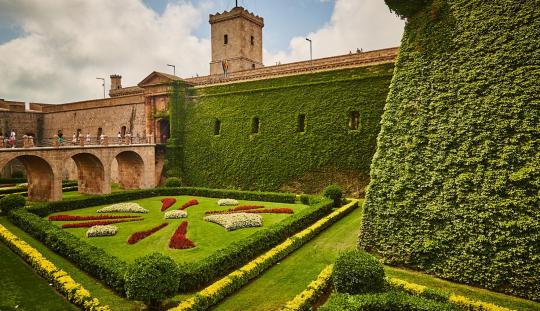
Montjuïc Castle - is an old military fortress, with roots dating back from 1640. In the last 350 years Montjuïc Castle has played a decisive role in the history of Barcelona, becoming a symbol after the Catalan defeat to Spain in 1714. Since then the Montjuïc cannons have bombarded the city and its citizens on various occasions, and Montjuïc has been used as a prison and torture centre repeatedly for three centuries.The castle is infamous in Catalan history books because of its role in the civil war from 1936 to 1939 when both sides of the conflict imprisoned, tortured and shot political prisoners at Montjuïc, among them Lluís Companys, who was the president of the Generalitat of Catalonia during the Spanish Civil War. Companys was executed upon orders from the Spanish State at Montjuïc Castle in 1940.

Barcelona Pavilion - designed by Ludwig Mies van der Rohe and Lilly Reich, was the German Pavilion for the 1929 International Exposition in Barcelona, Spain. The pavilion for the International Exhibition was supposed to represent the new Weimar Germany: democratic, culturally progressive, prospering, and thoroughly pacifist; a self-portrait through architecture.

Jardí Botànic de Barcelona (Botanic Garden) - set amongst a number of stadiums used in the Summer Olympic Games of 1992. Although a botanical garden had been established in Barcelona as early as 1888, the current gardens date from 1999. “After only a few minutes of walking around the Botanic Gardens I felt I had entered a Zen monastery, calm and peace and cleanliness.”

Bibliotec Sant Antoni (Joan Oliver) - The library, named in honor of playwright and poet Joan Oliver, came about through a competition won by RCR in 2005. The architects sought to make the street more dynamic and to open up the inner courtyard for public use, as well as to create a library. The glass-enclosed main reading room is raised up and set between the two lateral wings of the library, which allow light to filter through from both sides, forming a gateway into the public space. This courtyard, with its trees, earthen paving, sitting areas, games, etc. can be understood as an extension of the library’s reading rooms.
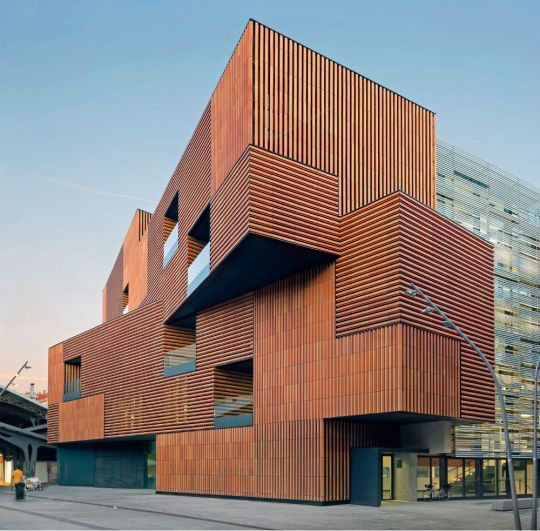
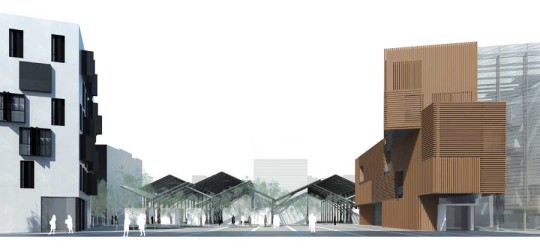
Plaza de la Gardunya - Escuela Massana (school of Art and Design) is part of the long process of urban transformation of Plaza de la Gardunya, located in Barcelona’s historical centre. the effort put into this project responds to the desire of creating a bright interior space with open connecting spaces whilst, at the same time, the exterior of the building remains in harmony with the urban fabric. The building showcases different volumetries and façade textures as a response to the surrounding buildings. With the aim of giving it a more unique and sculptural look and, at the same time, make it more airy, the section that faces onto the square is divided into two sections slightly rotated, creating terraces. The school, which is an institution that welcomes future artisans and designers, is clad in a ceramic material of large dimensions, made in an artisanal manner and unique to our building. This helped to give it its unique character and highlights the sculptural nature of the building, whilst protecting the privacy of the students.
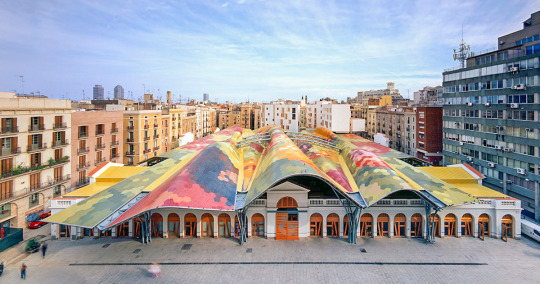
Santa Caterina Food Market - Buzzy market featuring a unique, wavy roof & colourful mosaics, with a variety of vendors & eateries. A competition was opened to restore the Santa Caterina city market located in the old quarter of Barcelona in 1997. EMBT won the bid with a proposal that aimed at incorporating the extreme complexity of the setting itself by creating a commercial market complemented by a residential zone and public spaces that integrated all the activities of the neighbourhood.
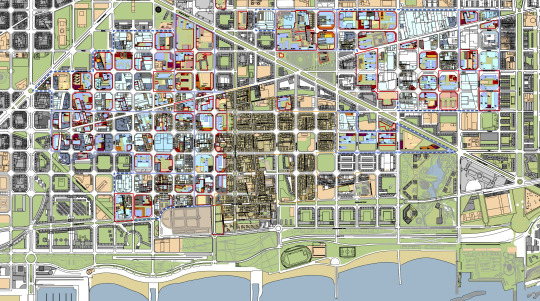
22@ District - is the corporative name given to an urban renewal area in Barcelona's formerly industrial area of Poblenou, in the district of Sant Martí, nicknamed "the Catalan Manchester" in the 19th century. Its aim is to convert Poblenou into the city's technological and innovation district, as well as to increase leisure and residential spaces. Centered on Plaça de les Glòries Catalanes, it is part of one of Europe's biggest urban regeneration schemes, begun during the 2000s and still ongoing.

The Museu del Disseny de Barcelona - is a new center of Barcelona's Institute of Culture, acting as a museum and laboratory. It focuses on 4 branches or design disciplines: space design, product design, information design and fashion. Barcelona is a city historically linked to design. It was decided to build a single space in which locate all collections and endowments existing in Barcelona related to the world of design, and Oriol Bohigas commissioned the construction of a building in the Plaça de les Glòries.

Torre Glòries - is a 38-story skyscraper which marks the gateway to the new technological district of Barcelona. It was designed by French architect Jean Nouvel in association with the Spanish firm b720 Fermín Vázquez Arquitectos and built by Dragados. Torre Agbar is intended to recall the shape of a geyser rising into the air. It was inspired by Montserrat, a mountain near Barcelona. In an interview, he described the tower as having a phallic character.

Edifici Mediatic - Enric Ruiz-Geli doesn’t emphasise the media impact of his futuristic building, but instead its energy efficiency. Extensive studies formed the basis for the parametric design where the award-winning steel frame is on the outside and the interior offers flexible use of space. The patented cushions made of ETFE membranes are controllable, allowing the different façades to be insulated, opened, or shaded as needed. Edifici MediaTIC is a prime example of forward-looking architecture.
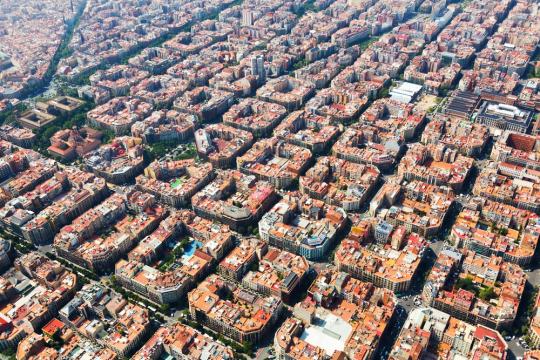
Urban Superblocks - Barcelona’s radical plan to take back streets from cars. A vision for a different way of living in the 21st century, one that steps back from many of the mistakes of the auto-besotted 20th century, refocusing on health and community. It is a bigger and more ambitious city plan than anything being discussed in America and, more important, a plan that is actually being implemented, with a few solid pilot projects behind it, a list of lessons learned, and a half-dozen new projects in the works.
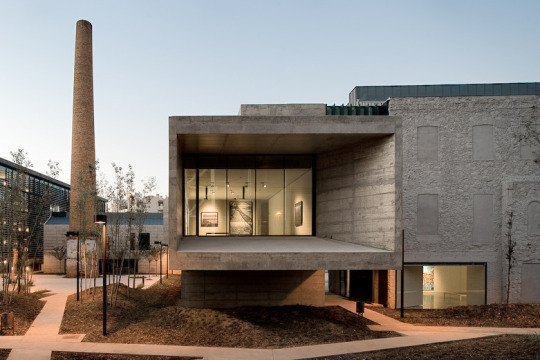
Can Framis Museum - Is an art center devoted to the promotion of contemporary Catalan painting. Located in the old Can Framis factory complex, the museum displays more than 250 paintings from the sixties to the present made by artists born or currently living in Catalonia.
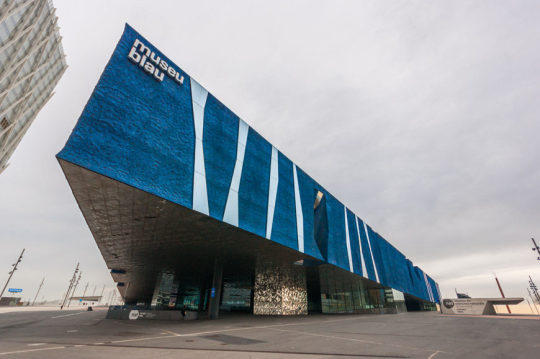
Museu Blau (Science Museum) – By Herzon De Meuron “We look for materials which are as intelligent, versatile and complex as natural phenomena, in other words materials which don't just appeal to the eyes of the astounded art critic, but are also really efficient and appeal to all our senses.” – Jacques Herzog. A triangular mass of gray-blue concrete punctured and split in places to reveal the contrasting use of reflective planes.
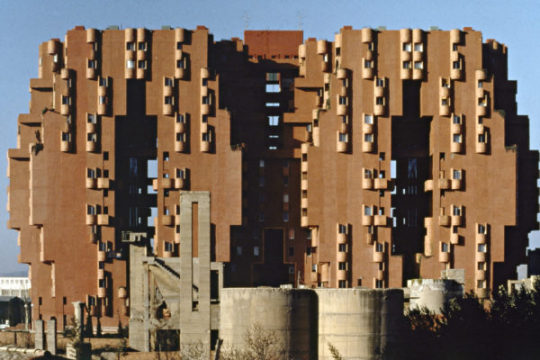

Walden 7 - is an apartment building designed by Ricardo Bofill's team and located close to Barcelona, in Catalonia. It was built in 1975. The original project includes 446 residences. The original exterior façade was covered with small, red ceramic tiles backed with the wrong adhesive, creating a pedestrian hazard as the tiles fell off the building.

The day of the Dead - is a Mexican holiday celebrated throughout Mexico, and by people of Mexican heritage elsewhere. The holiday involves family and friends gathering to pray for and remember friends and family members who have died, and helping support their spiritual journey. In Mexican culture, death is viewed as a natural part of the human cycle. Mexicans view it not as a day of sadness but as a day of celebration because their loved ones awake and celebrate with them. Mexican cempasúchil (marigold) is the traditional flower used to honor the dead.

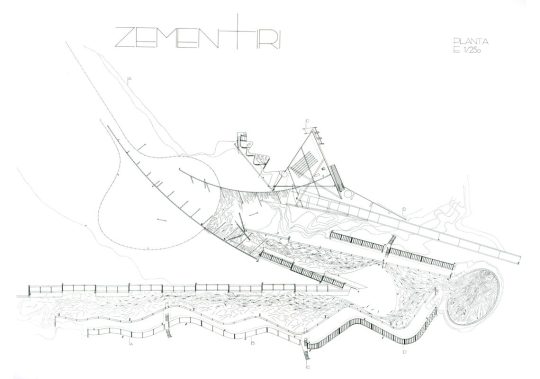
Igualada Cemetery - Designed by the architects Enric Miralles and Carme Pinós after winning an architectural competition in 1984. the cemetery became widely regarded as one of the most poetic works of twentieth century Catalan architecture. to explore poetic ideas regarding the acceptance of the cycle of life to enable a link between the past, the present, and the future. A processional "street" descends from the entrance, where crossed, rusting, steel poles doubling as gates and likened to the crosses at Calvary, proclaim the start of a winding pathway towards the burial area. The route is lined with repeatable concrete loculi forming retaining walls and the floor of the path has railway sleepers set into its concrete surface.The intention was to bring the bereaved down into the landscape to a 'city of the dead', an in between place where the dead and the living are brought closer together. The spaces are designed to provoke thoughts and memories.
5 notes
·
View notes
Photo


Us convidem a la taula rodona L'art revisa Papanek, una de les activitats paral·leles de l'exposició temporal Victor Papanek: La política del disseny.
L’Art Contemporani porta dècades treballant i alhora debatent la dimensió política de les pràctiques artístiques. Per això, quan Papanek va plantejar si es pot dissenyar tenir una mentalitat social i si el disseny pot ser una eina per a la transformació política i social, una part del món de l’art es va apropar a les seves tesis. L’objectiu de la taula és analitzar des de la mirada de l’art actual les propostes de Papanek que intenten desbordar el marc gremial del disseny per a intervenir en “la vida”.
Els participants de la taula rodona seran: Amanda Cuesta, una crítica d'art, comissària i editora independent. Actualment codirigeix el projecte cultural i llibreria La Canibal; Alan Carrasco, artista visual i editor de continguts de la publicació d'història i crítica de les arts Situacions; Javier Peñafiel, format en filosofia i en l’activisme social dels anys vuitanta, produeix instal·lacions amb objectes, dibuixos, imatges i textos. Moderarà Oscar Guayabero, paradissenyador.
Data:
Dimarts 3 de desembre, 18.30 h
Lloc:
Museu del Disseny de Barcelona
https://ajuntament.barcelona.cat/museudeldisseny/ca/activitat/lart-revisa-papanek
bibliografia_relacionada.pdf (2.92 MB)

https://www.facebook.com/museudeldisseny/posts/2866658396699746
https://www.nuvol.com/art/el-fracas-de-les-arts-visuals-71593
1 note
·
View note
Photo
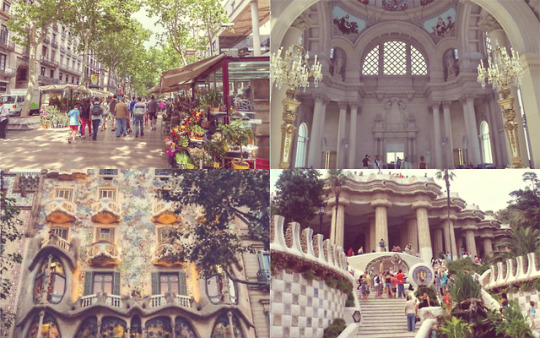

DESTINATION: BARCELONA, SPAIN
Pack your bags and get your passports ready, it’s time for Costa Serena’s spring break trip! This year’s all expense paid vacation is taking students and faculty alike to Barcelona, Spain. From March 17th through April 1st you will all be able to enjoy the sights, sounds, tastes, and smells of Spain in one of it’s most important cities! The event starts this Sunday at 12am CST, so get your starters ready because Monday will be our first entire day there and there’s much to do!
Under the cut are several activitiies for your charas to enjoy in the city. We will be staying at the Hotel Indigo Barcelona right by Plaça de Catalunya. Suite mates will be posted in a separate post. Remember this is a plot drop event, which means all previous conversations will be suspended. Feel free to post anything Barcelona related (including starters) as “serenabarca″. Make sure to like the post if your character is participating. (If you’re rechecking this challenge for reference, remember some of your own post might be tagged as wdpabarca, if you want to check them out and update them)
THINGS TO DO IN BARCELONA
Art/History/Natural
Park Güell
La Sagrada Familia
Casa Batlló
La Pedrera (Casa Milà)
Mount Montjuic fountains and cableway
Plaça de Catalunya
Ciudadela Park
Museu Nacional d'Art de Catalunya
Palau de la Música Catalana
Casa-Museo Gaudí (Gaudí’s old house)
Picasso Museum
Museu D'Història de Barcelona
Attractions/Nightlife/Sports
Attraction Park in Tibidabo Mountain
L’Aquàrium de Barcelona
Paseo de Gracia
La Rambla
Diagonal Avenue
El Born
Barrio Gótico (Gothic Quarter)
El Raval
Camp Nou
Cuisine
Tapa Tapa
Caelis
Bodega Biarritz 1881
Vinitus
Cervecería Catalana
Libertine
Satan’s at Casa Bonay
Udon
Accés
10 notes
·
View notes
Photo
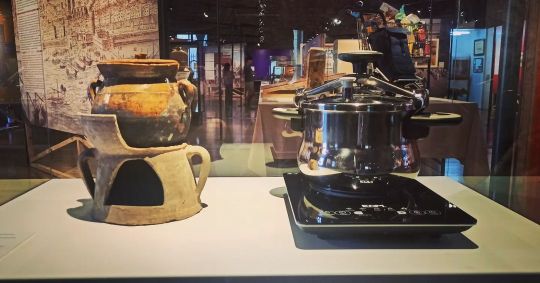
#Evolució a l'#exposició 'Alimentar Barcelona. Ciutat, proveïment i salut' al #Museu d'#Història de #Barcelona #MUHBA #Alimentació #AlimentacióSostenibleBCN #Barcelona #BCN (at MUHBA Museu d'història de Barcelona) https://www.instagram.com/p/CgNHNGHL5ez/?igshid=NGJjMDIxMWI=
0 notes
Text
23 anys més tard de la gran retrospectiva que es va poder veure a la Fundació Miró, el pintor belga René Magritte protagonitza una mostra al CaixaForum que aplega una selecció de pintures, pel·lícules casolanes i fotografies sota el nom de “La màquina Magritte”.
La màquina universal per fer quadres
El 1950, René Magritte va escriure, en col·laboració amb uns amics, el prospecte ‘La manufacture de poésie’, un catàleg de productes imaginaris, entre els quals destacava una màquina per fer quadres. El funcionament teòric d’aquesta andròmina permetria compondre una quantitat il·limitada de pintures a partir d’una sèrie de variants. L’exposició “La màquina Magritte” juga amb la possibilitat que aquesta invenció sigui real i estigui formada per una sèrie de dispositius interconnectats que ens revelen la personalitat i l’univers pictòric de l’artista.
El món oníric de René Magritte
El pintor belga René Magritte (Lessines, 1868 – Brussel·les, 1967) és un dels grans exponents del surrealisme europeu del segle XX. Tot i haver-se iniciat en l’impressionisme, l’obra de l’italià Giorgio de Chirico el va impressionar profundament i el va fer decantar-se per un univers simbolista i juganer, on l’espectador juga un paper important a l’hora d’establir relacions entre els elements del quadre i compondre el seu significat. Les reflexions sobre els límits de la percepció, els mons onírics, les imatges dobles i la ironia iconoclasta són elements clau en la seva pintura.
0 notes